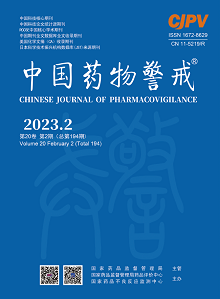|
|
Humoral immune characteristics of peripheral blood of CAP patients with antibiotic-associated DILI
WANG Yu, HUANG Jingyi, HOU Lixin, LI Shuang, CUI Yongkang, HUANG Lanwei
2023, 20(2):
132-135.
DOI: 10.19803/j.1672-8629.20220660
Objective To explore the correlations between humoral immune indexes of peripheral blood of patients with community acquired pneumonia (CAP) and drug-induced liver injury (DILI) associated with antibiotics during treatment. Methods A total of 1 356 patients with CAP who were treated with antibiotics between June 1, 2021 and June 30, 2022 in Shanghai Baoshan District Hospital of Integrated Traditional Chinese and Western Medicine were retrospectively selected. Patients with DILI were selected as the case group, while those without DILI were matched as the control group at the ratio of 1∶2. The clinical data of the patients were collected, the differences between the two groups were analyzed, and multivariate logistic regression was used to analyze the influencing factors of DILI in CAP patients receiving antibiotics. Results The total number of CAP patients receiving antibiotics during the retrospective study was 1 356, 34 of whom developed antibiotic-related DILI, so the incidence of DILI was 2.5%. The data on 31 cases of antibiotic-related DILI and 63 cases of the control group were successfully matched. The antibiotic-related DILI was of the hepatocyte injury type. The clinical data of the case group and the control group were balanced and comparable in terms of gender, age (±5 years), main diagnosis, severity of diseases (CURB-65 score), underlying diseases, treatment courses and doses, and diet and nursing were consistent. There was no significant difference in the types of antibiotics used (penicillin, cephalosporins, carbapenems, quinolones, aminoglycosides and macrolides) between the two groups. The humoral immune indexes of peripheral blood, gender, age, CURB-65 score, and antibiotics were included in binary regression analysis, and the results showed that IgG and total IgE were the risk factors for antibiotic-related DILI and were of statistical significance (P=0.028, P=0.038). The AUCs of ROC curves based on risk factors were 0.461 (95%CI: 0.336~0.587) and 0.683 (95%CI: 0.560-0.806), respectively, indicating that total IgE had a feasible discrimination for the diagnosis of antibiotic-related DILI. Conclusion Humoral immune factors, especially abnormal elevation of total IgE, can significantly increase the odds of antibiotic-related DILI in CAP patients, indicating that adaptive humoral immunity may be involved in the pathogenesis of antibiotic-related DILI.
References |
Related Articles |
Metrics
|

